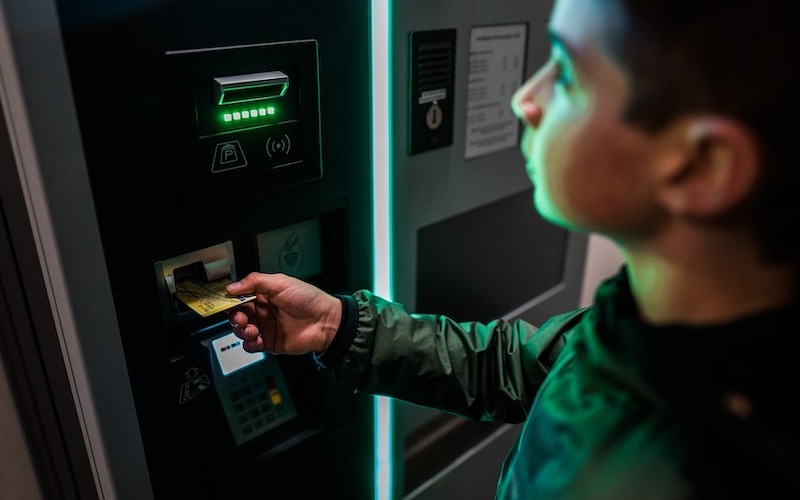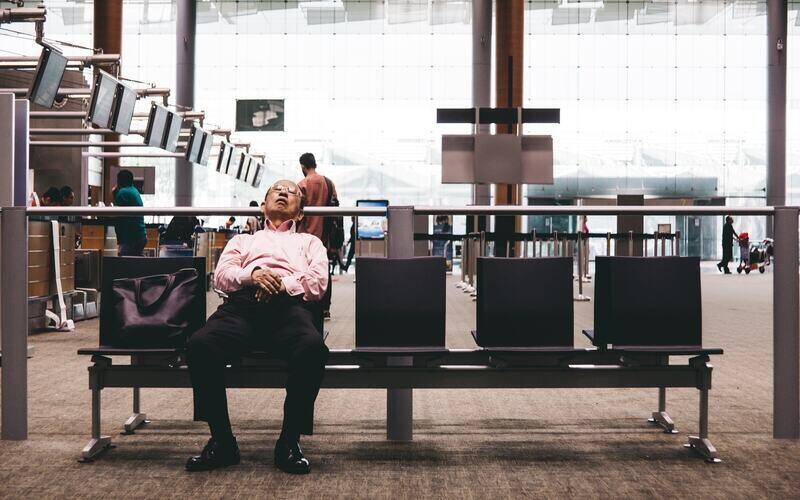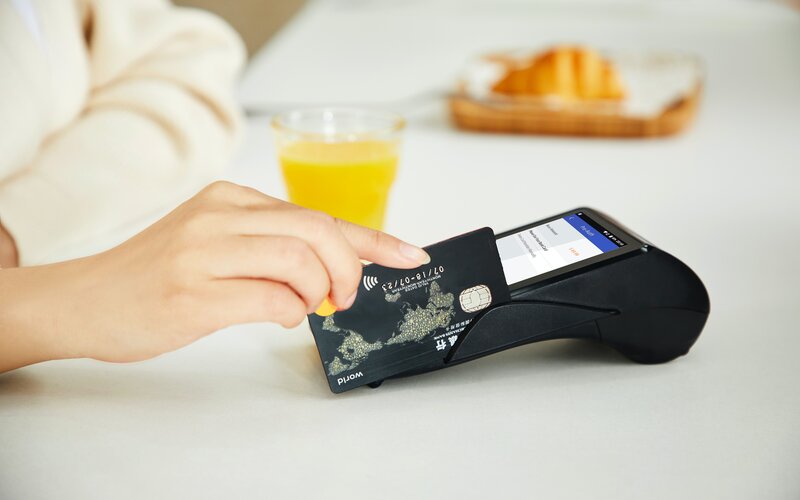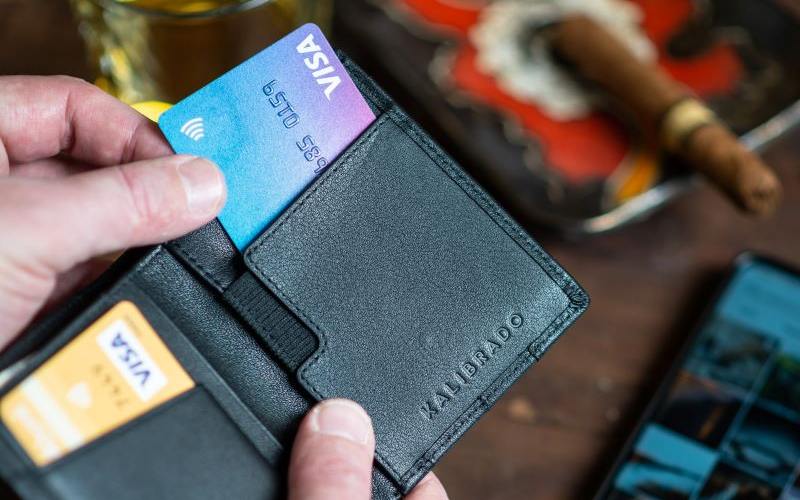If you like to indulge in a bit of retail action while you’re on holidays, you may be keen to know how you can get refunded the consumption tax you pay. Consumption tax is like Australia’s Goods and Services Tax (GST) - a government tax tagged on to consumer items - and, yes, Australia allows people to claim GST and wine tax refunds, but there are rules. Indeed, the rules are different for every country but they’re worth knowing if you're planning to splurge on your next trip.
Generally, tax refunds apply to goods, not services, and not hotel accommodation or meals. Most of the time, you have to get your paperwork in order at the point of sale (you’ll need to take your passport) and claim the tax back at the airport before you leave the country. There is generally a minimum purchase amount at a single retailer so it’s better to buy up big at one place than spread your spending around. You also can’t use your purchases before you leave the country so it’s best to leave them in their packaging. That said, let’s check which countries offer consumption tax refunds.
Singapore
Singapore’s Tourist Refund Scheme is administered by Singapore Customers on behalf of the country’s tax authority. Tourists can claim a refund of 9% GST paid on goods purchased from participating retailers if the goods are taken out of Singapore via Changi International Airport or Seletar Airport.
You need to request the retailer to provide you with the right documentation and the purchases must total at least SGD100 in value and be made within two months of your departure date. The claim must be on goods, not services, and need to be with you, not coming by freight. The goods must be for personal use, not business or commercial purposes, and must not have been consumed, wholly or partly, in Singapore. You also need to depart with the goods within 12 hours after you have your GST refund approved.
There are rules for when and where you need to claim your refund depending on the size of your goods and whether they’ll be carried as checked-in or hand-held baggage. There are also self-help kiosks for some goods and you get to choose how you would like to receive the refund. For all options, there is also a handling fee, so you won’t get the full 9% of tax refunded.
European Union
There are slightly different rules for claiming back Value Added Tax (VAT) for different countries within the EU and the VAT rate differs from country to country, and from item to item, ranging from 17-27%, so it can be worth your while getting a refund. Generally, your goods (excluding cars and yachts if you’re wondering) must be taken out of the EU within three months of being purchased and all tourists must provide a stamped VAT refund document proving the purchase date.
Each EU country has a set minimum value of goods and in some countries, participating retailers may choose to refund the VAT directly or use an intermediary. Either way, they will generally deduct a fee. At the time of purchase, you will need to show your passport or other identity document to prove you are not an EU resident and sometimes you may be asked to show a ticket to prove you are going to be leaving the EU within the appropriate time.
The goods must go with you in your luggage when you leave the EU. You can get your VAT documents stamped at many larger airports but if you leave the EU by train, only certain major train stations have the facility. If you don’t receive a stamp, the refund will not be given. There are slightly different variations of the procedures in France (20% VAT), Germany (19% VAT), and Italy (22% VAT). It’s wise to research the rules and procedures for which countries you’ll be visiting and which country you’ll be departing from before you travel. Remember too that not all European countries are in the EU, including Norway, Turkey, Switzerland, and Iceland to name a few. You’ll need to bear that in mind if they are on your itinerary and research their tax refund rules separately.
United Kingdom
The UK’s VAT refund scheme, called the Retail Export Scheme, underwent a major shake-up when the country left the European Union. Overseas visitors can still buy VAT-free goods at participating retail stores (such as Harrods, Selfridges, and Harvey Nichols) and pay to have them sent directly to overseas addresses. However, claiming VAT refunds at airports, ports, and Eurostar train stations ended on 1 January 2021 with the country’s Retail Export Scheme yet to be replaced.
United States
Anyone who has ever travelled to the United States will know there can be federal, state, and city taxes applied to goods and services, depending on where you visit and what you purchase. The US government does not refund national sales tax to overseas tourists but, as at March 2024, two US states do – Texas and Louisiana.
In Texas, you can apply for a tax refund if you have a foreign passport and show proof of an airline ticket departing the US within 90 days. As at March 2024, there are 13 tax refund locations in six Texan cities, situated in shopping malls and at Houston’s George Bush International Airport. There are also around 6,000 stores participating in the state’s tax rebate program.
Louisiana also has around 1,000 shopping malls that offer tax refunds for international travellers. There are also tax refund locations at New Orleans International Airport and five other locations situated near shopping destinations in major cities. Meanwhile, Alaska, Delaware, Montana, New Hampshire, and Oregon, purchases are exempt from state sales tax while New York City also doesn’t charge sales tax on clothes and shoes under $110 per individual item.
Japan
Japan’s process is relatively streamlined since the country digitised its tax-free sales procedures. International visitors staying in Japan for less than six months can claim a 10% tax refund on certain purchases of 5,000 yen or more at a single store. These include goods bought at duty-free stores, certain electronics retailers, and some department stores. Again, the goods must be for personal use and not business purposes and can’t be used or consumed before you leave Japan. Packages are sealed at the point of sale and shouldn’t be tampered with.
Some retailers may deduct the tax at the time of purchase, so take your passport. Others may direct you to a service where the refund must be paid on the day of your purchase. Extra fees usually apply. At the airport, your purchase will be recorded electronically against your passport. Generally, you must have the goods with you when you leave the country. It’s wise to have them with you as carry-on luggage as the Customs counter is generally beyond airline check-in and security at Japanese airports. If you need to have the goods in your checked luggage to comply with airline requirements, you need to inform the check-in staff and they can summons a customs officer to inspect your goods and receipts, so have them handy.
Be warned, Japan is currently reviewing its point-of-sale tax refund system in a bid to stop some tourists reselling tax-free goods within Japan. It is now considering instituting a point-of-departure tax refund system at airports and seaports like many other countries.
Australia
Australia’s Tax Refund Scheme (TRS) refunds both GST (10%) and Wine Equalisation Tax (WET) (23.59%) on purchases being taken out of the country. The scheme is open to Australians and overseas visitors on goods worth at least $300 and being taken out of the country with you, not freighted separately. You must purchase the goods from a supplier with an ABN number within 60 days of leaving the country and have your paperwork in order.
You can only make your claim on the day of your departure from Australia – more than 30 minutes before your scheduled departure from an airport and between one and four hours before from a seaport. There is a long list of rules and exceptions, and potential claimants are warned they should be prepared to queue for long periods when claiming.
Claiming services
Where there is money to be claimed, it’s no surprise there are services offering to help you with your tax refund, for a fee of course. Some retailers in some countries may just take the tax off the purchase price on the spot and give you the paperwork that you need to complete. Others can organise the process for you or direct you to a nearby processing agency to give you an immediate refund, less a handling fee. These services tend to be in peak tourist and shopping locations.
Check for ‘Tax Free’ stickers in the windows of major retailers when you’re overseas and ask about their processes. In most cases, you will usually still need to get your documents stamped at the border. Sometimes this entails posting the stamped documents back to the retailer or agency to they can complete their paperwork and compliance. If they don’t receive it, they can cancel your refund and charge the full amount, with tax, to your credit card.
Tips and tricks
Anyone who’s attempted to claim a tax refund on goods purchased overseas will tell you it’s not always a straightforward process. To ensure your best chance of getting your refund, always research the procedures of the country you’re in before you purchase and again before you depart. It’s also necessary to research exactly what you’ll need to do at the specific airport or seaport you’re leaving from.
Some airports have one location to get your documents stamped and another to claim your tax refund. Others have a single desk to handle the whole process. You also need to check where exactly these are situated at the airport or seaport. Sometimes they are located before you go through security and others may be after you go through. Sometimes customs officials may request to see the goods when they are in your packed luggage that has already been checked in so try to make your tax claim first, if that’s possible. (It’s not always.)
Alas, tax refund counters may not always be sufficiently staffed to ensure all claimants get their refunds processed before they depart the country. Queues can be long and slow moving and some countries will specify time windows to make claims before you depart. It may not always be possible to get your refund within the times specified. As well, self-serve kiosks may not always work as they should. If you can get your documents stamped, you may be able to mail them back to claim a refund. However, generally speaking, once you leave a country, you are no longer eligible to claim a tax refund.
The best advice is to be organised, have your paperwork in perfect order, be early for your flight or ship (although not too early as most refunds can only be made just before you leave a country), and be prepared to wait. The process runs more smoothly in some countries than others. Funnily enough, some governments are not especially invested in returning money to tourists.
Image by freestocks on Unsplash

Ready, Set, Buy!
Learn everything you need to know about buying property – from choosing the right property and home loan, to the purchasing process, tips to save money and more!
With bonus Q&A sheet and Crossword!



 Harrison Astbury
Harrison Astbury
 Jacob Cocciolone
Jacob Cocciolone










